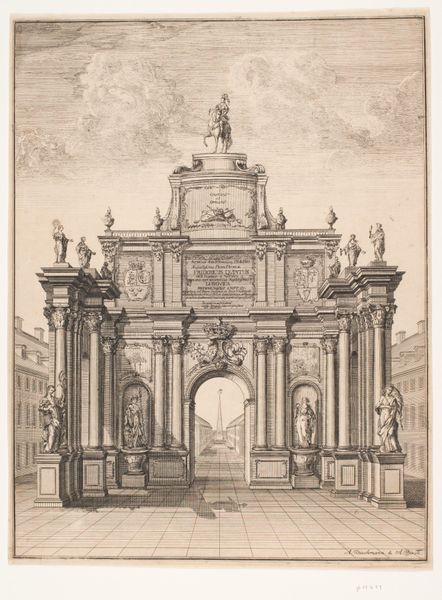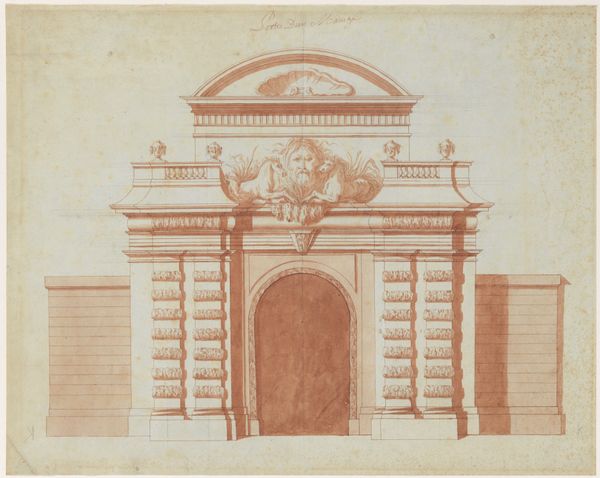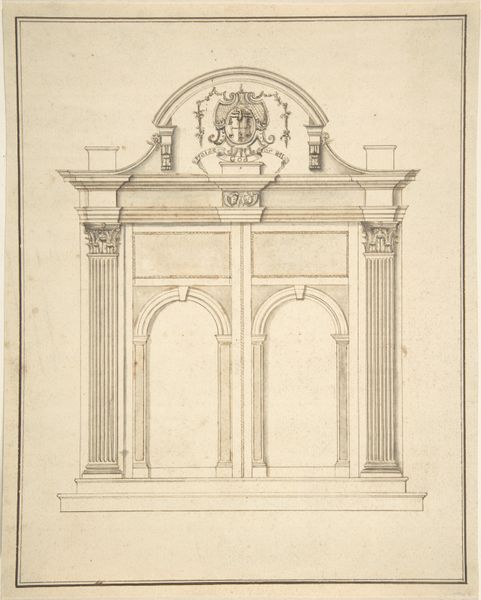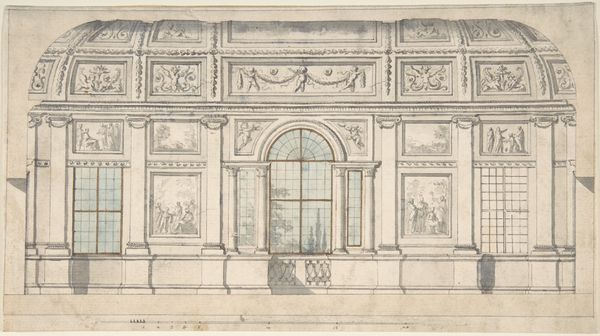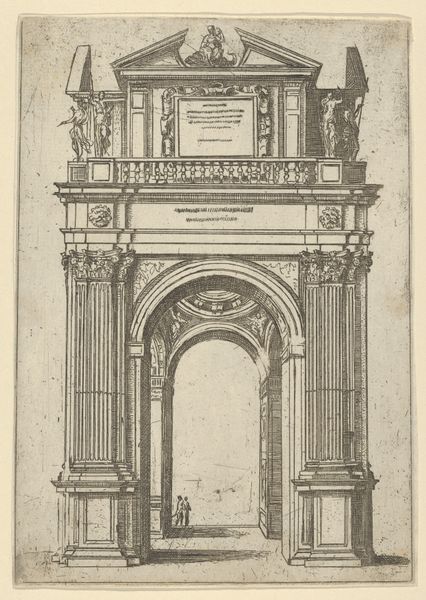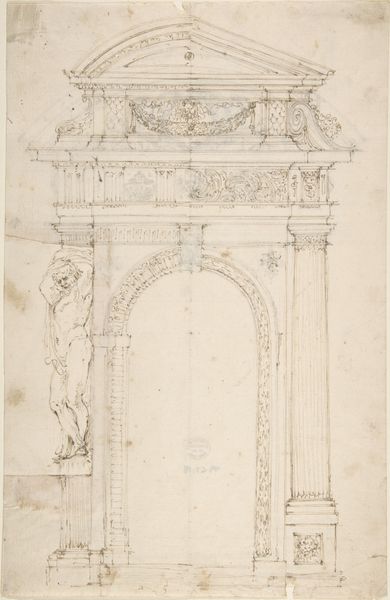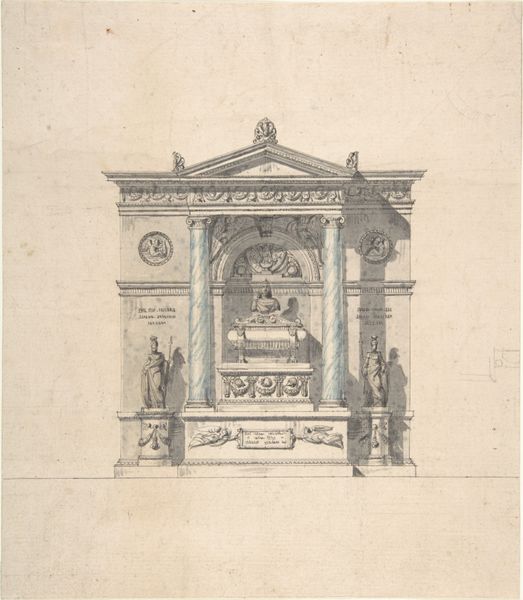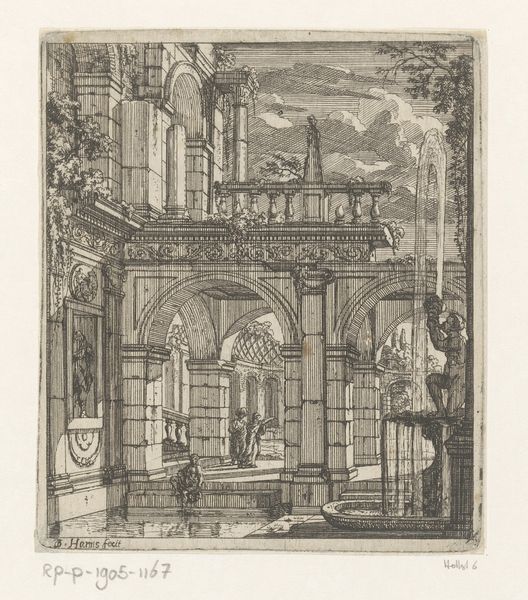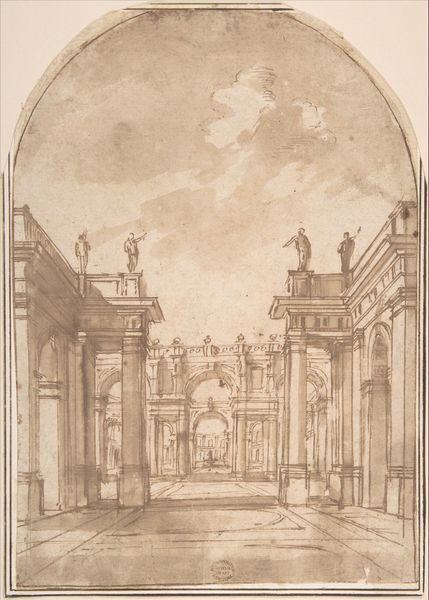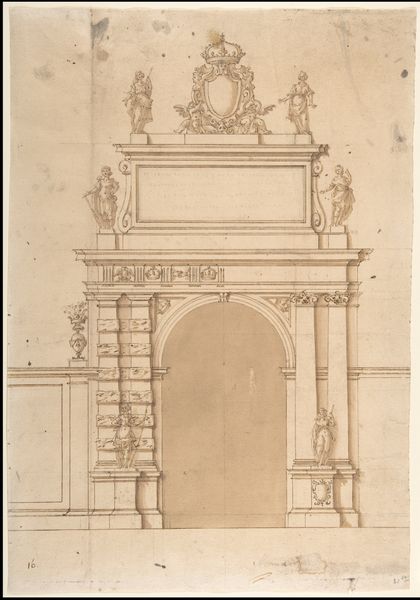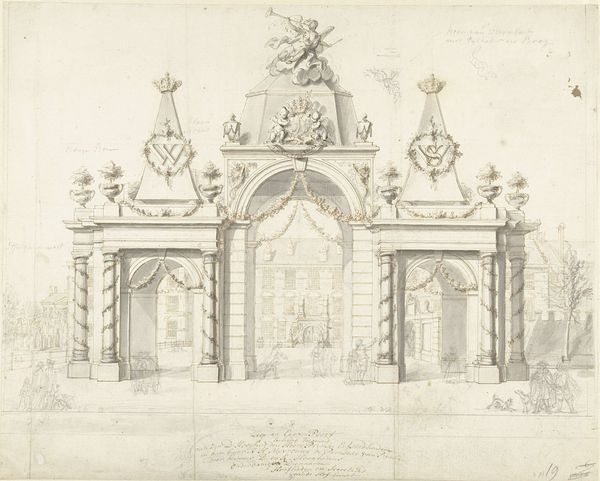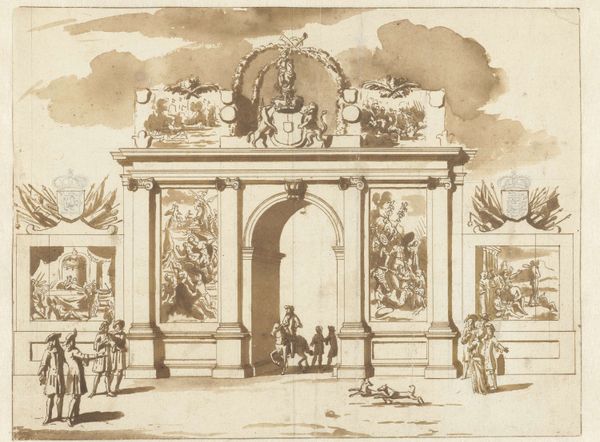
Design for a Stage Set: Triumphal Arch with Fountains in the Side Niches and the View of a Boat through the Arch 1700 - 1780
0:00
0:00
drawing, print, pencil, architecture
#
drawing
#
baroque
# print
#
pencil sketch
#
etching
#
pencil
#
architecture drawing
#
architecture
Dimensions: 13 3/8 x 11 1/8 in. (33.9 x 28.2 cm)
Copyright: Public Domain
Curator: This drawing, held here at the Met, is titled "Design for a Stage Set: Triumphal Arch with Fountains in the Side Niches and the View of a Boat through the Arch." It's an etching in pencil, dating from somewhere between 1700 and 1780. Editor: It certainly feels grand, yet unfinished. I’m struck by the delicate line work giving form to the very solid-seeming archway, with its implied theatrical spectacle behind it. The perspective is wonderfully manipulated. Curator: Indeed. This drawing uses pencil and etching which suggests the design's evolution from preliminary sketch to something intended for broader circulation as a print. We have a stage design produced perhaps to inspire some rich person commissioning a play. What kind of labor went into erecting something like that? And how ephemeral it all would've been! Editor: I am drawn to the triumphal arch itself—an enduring symbol of power, victory, and passage, stretching back to Roman antiquity. Notice the nautical element with the ship beyond. Are we meant to see it as a safe harbor after a victorious return, or perhaps as the source of prosperity lauded in the play? Curator: It is fascinating to consider that. There's the interesting position of art production. Stage design is often dismissed as pure service to theater. Yet here we find this lovely object in and of itself. Who produced it? Were they a skilled artisan in service of a bigger shop, or something else? Editor: The fountains flanking the arch feel almost like supporting actors in this drama of symbolism. Water, a classic emblem of purification and renewal, would amplify the celebratory atmosphere of the triumph. The theatricality makes them fascinating, like symbols acting in support of some powerful entity, here celebrated for their cultural position. Curator: And it all boils down to the labor, doesn't it? From the person who mixed the inks to the person hauling stone to build that arch… Whose triumphs were truly being celebrated, and at what cost? Editor: In the end, perhaps, all arches serve as portals—both real and imagined—and this rendering offers us a tantalizing glimpse into a world steeped in power, performance, and symbolism. Curator: I agree. It really does leave you pondering all the labor behind such short-lived spectacles.
Comments
No comments
Be the first to comment and join the conversation on the ultimate creative platform.
